Ijraset Journal For Research in Applied Science and Engineering Technology
- Home / Ijraset
- On This Page
- Abstract
- Introduction
- Conclusion
- References
- Copyright
Image Transmission through Water Medium
Authors: Devatha S, Jayapriya J, Neha S
DOI Link: https://doi.org/10.22214/ijraset.2022.44538
Certificate: View Certificate
Abstract
Water data communication is a potential technology to realize underwater communication. The experiment of underwater data communication in the laboratory is different with that in the real water environment because the physical scale is limited. Although since recent several decades, artificial scattering agents are used to recreate underwater data communication through water channels under different communication medium conditions, but the similarity between experimental water and natural water is not reliable, such as the similarity in frequency domain characteristics. The underwater transmitter directs a signal to the water\'s surface, causing tiny vibrations that correspond to the transmission. Above the surface, a highly sensitive receiver reads these minute disturbances and decodes the signal.
Introduction
I. INTRODUCTION
A. General
In recent years, underwater activities and related wireless communication have drawn great interest from both academia and industry. Wireless communication involves no physical link established between two or more devices, communicating wirelessly. To explore and acquire data from ocean efficiently and safely, it is essential to establish communication links between underwater platforms and terrestrial platforms. Radio frequency wave (RF), acoustic wave and optical wave are three existing wireless carriers for transmission in the air and water. Although RF signal can travel a long distance and achieve a high transmission rate in the air, they can only propagate few meters through water due to high absorption and attenuation. Acoustic wave can travel several kilometres in the water and has been the prime choice for underwater communication. However, the transmission rate of an acoustic communication system is only in the order of kilobits per second, which cannot reach the requirements of potential applications. Underwater wireless communication plays a crucial position in marine activities which include environmental monitoring, underwater exploration, and clinical records collection. Underwater wireless communications nonetheless continue to be pretty challenging, because of the precise and cruel situations that signify underwater channel.
B. Design Techniques
- AES Algorithm: AES has proved to be very effective and efficient and, given the correct key, adds little to no-noticeable difference in overhead for any process where it is utilized. Essentially, AES is a fast and highly secure form of encryption. AES data encryption is a more mathematically efficient and elegant cryptographic algorithm, but its main strength rests in the option for various key lengths. AES allows you to choose a 128-bit, 192-bit or 256-bit key, making it exponentially stronger than the 56-bit key of DES. The Advanced Encryption Standard (AES) is used in order to protect data against unauthorised access and to encrypt this. The cryptographic process key of varying lengths is utilised for this purpose. AES brings additional security because it uses a key expansion process in which the initial key is used to come up with a series of new keys called round keys. These round keys are generated over multiple rounds of modification, each of which makes it harder to break the encryption
C. Design Technologies
The design technologies used in our project are discussed below.
- Embedded System: Embedded system is a special-purpose computer system designed to perform one or a few dedicated functions, often with real-time computing constraints. It is usually embedded as part of a complete device including hardware and mechanical parts. In contrast, a general-purpose computer, such as a personal computer, can do many different tasks depending on programming. Embedded systems have become very important today as they control many of the common devices they use. Since the embedded system is dedicated to specific tasks, design engineers can optimize it, reducing the size and cost of the product, or increasing the reliability and performance. Some embedded systems are mass-produced, benefiting from economies of scale. Embedded systems are characterized by a unique set of characteristics. Each of these characteristics imposed a specific set of design constraints on embedded systems designers.
- Atmega328p Microcontroller: Microcontroller ATmega8 supports both synchronous & asynchronous data transmission schemes. It has three pins allocated for that. In many communication projects, the UART module is widely used for communication with PC Microcontroller. The ATmega328P is supported with a full suite of program and system development tools which includes: C compilers, macro assemblers, program debugger/simulators, in-circuit emulators, and evaluation kits. The fast PWM mode that provides a high-frequency PWM waveform generation allows for it to be suited for power regulation, rectification, and DAC applications.
- Liquid-Crystal Display: LCD (Liquid Crystal Display) is a type of flat panel display which uses liquid crystals in its primary form of operation. LEDs have a large and varying set of use cases for consumers and businesses, as they can be commonly found in smartphones, televisions, computer monitors and instrument panels. A character positive LCD with a backlight will have black lettering on a background that is the colour of the backlight, and a character negative LCD will have a black background with the letters being of the same colour as the backlight. Optical filters are added to white on blue LCDs to give them their characteristic appearance.
D. Objectives
The objective of the project is to transmit image efficiently and securely to the desired devices using water as communication medium.
E. Organization Of The Report
The report is summarized as follows:
- Chapter 1 describes an introduction and the purpose of the project.
- Chapter 2 deals with literature survey.
- Chapter 3 deals with existing methods and proposed methods.
- Chapter 4 explains in depth the actual working of the project.
- Chapter 5 ends with the conclusion and future enhancement ideas
II. LITERATURE SURVEY
- Title: Preliminary Characterization of Coverage for Water-to-Air Visible Light Communication through Wavy Water Surface
AUTHORS: Tianrui Lin, Nuo Huang, Chen Gong, Jianghua Luo
YEAR: 2021
In this paper, they establish a water-to-air visible light communication (VLC) link using green light emitting diode (LED), and investigate the coverage characteristics of the designed water-to-air -VLC link under calm and wavy water conditions. By transmitting a high-frequency sinusoid signal, we extract the variation of link gain. Based on the received signals of an experimental water-to-air -VLC system, we obtain the real link gains at different receiver points and analyze the channel temporal properties in good link conditions (called link “on” state). It is seen that the mean channel gain under wavy water surface condition can be larger than that under calm water surface condition, especially when the transmitter and receiver are not perfectly aligned, due to the random spatial modulation effect of wavy water surface. Moreover, the “on” state duration and interval can be well fitted by a shifted exponential distribution and a shifted lognormal distribution, respectively. Bit error rate result reveal the effect of expanded link gain variation under wavy water surface condition. This work provides significant guidance for future works on the communication protocol design and related performance analysis.
2. Title: Internet of Water Things: A Remote Raw Water Monitoring and Control System
AUTHORS: Abílio c. da silva Júnior, Roberto Munoz
YEAR: 2021
The scarcity of the planet's water resources is a concern of several international entities and governments. Smart solutions for water quality monitoring are gaining prominence with advances in communication technology. This work's primary goal is to develop a new online system to monitor and manage water resources, called Internet of Water Things. The proposed system's objective would be to control and manage raw water resources. Thus, it has developed a platform based on the server-less architecture and Internet of Things Architectural Reference Model, in which it is applied in a simulation environment, considering several electronic devices to validate its performance. For this research, there is a system for capturing raw water from tubular wells. Each well has a level sensor, a temperature sensor and a rain gauge.
The data is collected every minute by an electronic device and sent every hour to the Internet of Water Things system. From data analysis, the amount of memory allocated to functions minimally interferes with efficiency. The Internet of Water Things system, applied in a real case, consists of connecting a device installed in a water well to the platform, where the data is transmitted through a 3G network and then processed. Thus, the proposed approach has great potential to be considered a complementary tool in monitoring raw water and assisting in decision-making for the management of water resources.
3. Title: Research on The Overall Framework of Intelligent Water Conservancy Construction
AUTHORS: Shaoxuan Li, Xiaowan Chen, Xiao Zhang
YEAR: 2021
Water conservancy in China has gone through a long stage from farmland to the rapid development of digital, and now it has officially entered into a new stage named intelligent water conservancy. As one of the main tasks of the water conservancy industry, intelligent water conservancy plays a vital role in water conservancy projects in terms of safe and stable operation as well as comprehensive benefits. In this paper, a set of feasible overall framework of intelligent water conservancy construction based on the current electronic information technology has been put forward.
4. Title: IoT based Water Parameter Monitoring System
AUTHORS: Krishna S, Sarath T V, M S Kumaraswamy, Vishnu Nair
YEAR: 2020
With the ever-rising pollution of water bodies caused by human-made actions as well as natural calamities, water monitoring systems are the focal point for society. Water-related application has much potential for automation. With the advent of big data analytics, there is a multitude of verticals in water quality, smart irrigation, and smart water distribution network. All of these works well with accurate and real-time data. The requirements for multiple sensor parameters and robust communication framework that can be extended to various domains of water monitoring applications are the most critical hindrance for the development of an automation application in this domain. This work proposes a system that overcomes these problems. With the use of an industrial multi-parameter sensor node, EXO Sonde the desired sensor values can be extracted from the physical world. The sensed data is processed and communicated forward to the server forward through a layered architecture to a server. The sensor node utilizes a file system to save the sensor data in case of network loss. The communication technology between nodes and sensors is GSM. In the server, the data gets stored and gets visualized in a web UI.
5. Title: Smart Water Meter using Power Line Communication (PLC) Approach for measurements of Accurate Water Consumption and Billing Process
AUTHORS: Abdul, Shaik Asif Hussain, Ajay Rana
YEAR: 2020
Data transmission methods have been evolved drastically with the development of internet. Data transmission methods are of two types. One is wired and the other one is wireless networks. Power line communication is considered as one of the tools that is used for power transmission using special type of modems that takes the data with known frequencies. The paper proposes smart water meter that uses flow sensor that collects household water consumption. The proposed system will be set to a threshold limit where the water is cut-off using electronic valve. The collected data will be sent to data centre for data analysis through grid power line using PLC modem. The data center further forwards the water billing department for billing purposes through SMS and then it will be sent to user mobile number. The proposed work aims at increasing accuracy of reading and collection process. The benefit of this work is reduced human intervention and measuring tools.
6. Title: The Internet of Things (IOT) Based Smart Rain Water Harvesting System
AUTHORS: Vardhaman Ranjan, Mohd Irshad, Neetu Joshi
YEAR: 2020
Ground water all over India is depleting fast. Niti Aayog has cautioned that Delhi could run out of ground water by 2020. This is a critical situation and can happen with other parts of India too. Conservation of water is the need of hour. Due to vast globalization, urbanization and modernization the quality of our surrounding is degrading which in turn is affecting the natural phenomenon of raining too. The gases such as Sulphur Dioxide and Nitrogen Dioxide released due to burning of fossil fuels gets transported by air and wind currents.
They mix with water and other material to form sulphuric acid and nitric acid causing acid rain. The problem in harvesting arise here as this water is not suitable for use. Storing this water in the same reservoir with slightly better quality of water can lead to degradation of that water also. Out of 1200 millions of gallons per day demand of water, 200 MGD requirement of Delhi is met by illegal boring of water. Under a regulation of 2012, it has been made mandatory for all establishment above 100 sq. m to have rain water harvesting system. Small size houses already constructed also need to be addressed. A major issue is not only harvesting of water but also the quality of harvested water. Present paper seeks to find answer to all these problems.
7. Title: Dynamic Optical Wireless Communication Channel Characterization Through Air-Water Interface
AUTHORS: Tianrui Lin; Chen Gong; Jianghua Luo; Zhengyuan Xu
YEAR: 2020
In this paper, we consider an optical wireless communication system model whose channel consists of three parts: underwater channel, atmosphere channel and the interface between air and water. To better approximate the reality, besides the effect of random air-water interface, we consider the impact of ocean current which leads to misalignment between the transmitter and receiver. On the basis of this model, we explore the communication viability and simulate its link gain and time delay. Monte Carlo simulation results show that the dynamic air-water interface extends the communication opportunities, especially when there is no direct path between the underwater nodes and airborne base station.
8. Title: Citizens’ campaigns for environmental water monitoring: lessons from field experiments
AUTHORS: Andreja Jonoski1, Thaine H. Assumpção, Iouliani Theona, Chrysovalantis Tsiakos, Maria Krommyda
YEAR: 2017
Advanced sensing technologies, combined with wireless sensor networks, have already demonstrated their value in monitoring urban water systems, where management is rather centralized within water utility organizations. Environmental water resources, characterized by more diverse stakeholders and overlapping management responsibilities of different agencies, present more challenging contexts for implementing novel sensing technologies. Crowdsourcing by citizens has been proposed as an alternative approach for adaptive data collection that can augment the amount of data collected, as well as bring together the diverse stakeholders and citizens in more participatory water resources management processes. This article first introduces the challenges of designing citizens' campaigns for collecting data on environmental waters. A set of developed mobile phone and web applications is then introduced, integrated within a specific platform, as it was used in the execution of citizens' campaigns for data needed in flood analysis and management. Experiences and lessons learned are presented from the field execution of citizens' campaigns in two pilot areas located in Europe the Danube Delta in Romania, and the Kifissos catchment in Greece. Two of the campaigns are on river data collection - water levels and water velocities, and two on collecting land use/land cover data. Surveys carried out with campaign participants indicate their appreciation of the initiative, but challenges remain regarding user-friendliness of the applications. Logistic issues such as timing, duration, and pathways for data collection impacted the motivation of participants. Overall, a unique and large dataset was obtained in terms of quantitative water measurements, despite data losses due to low raw data quality. Further work lies in evaluating the usability of this dataset for local authorities.
9. Title: LED-based Underwater Wireless Optical Communication for Small Mobile Platforms: Experimental Channel Study in Highly-Turbid Lake Water
AUTHORS: Chang Shu, Chunlei Zhang, Wei Zhang, Wei Wei, Wei jiang, Qiao Xiaorui
YEAR: 2017
Underwater collaborative work between small mobile platforms (SMP) such as divers, litter submarine or AUV, requires a high data rate communication system which is compact, reliable, affordable and eye-safe. The high bandwidth of LED-based underwater wireless optical communication (UWOC) is an advantage. Artificial, emulated as well as simulated, turbid underwater channel has been studied recently, but no practical nature water. To fully meet the requirements of challenging turbid underwater channel scenarios for SMP, we demonstrated a green LED-based UWOC system up to a bandwidth of 3.4 MHz in a highly-turbid nature lake water. Through a contrast wireless optical communication (WOC) experiment in air, turbid water channel is observed to compensates the receiving signal amplitude attenuates after propagating a longer attenuation length due to multiple-scattered light caused diffusion, and thus to be more like a single-input multi-output system. From our experimental observation, the single-input multi-output channel model could be employed not only in turbulent UWOC, but also in highly turbid UWOC.
Moreover, turbid water channel is observed a “frequency selection” effect, thus LED with lower threshold voltage at higher frequency would optimize bandwidth and link range, and a robust pre-code for interference cancellation would be a well-direct choice to constructing different UWOC system in highly turbid water for SMP. Our finding will provide a new reference complementing the current LED-based UWOC systems in realistic water environment.
10. Title: Smart City Wireless Connectivity Considerations and Cost Analysis: Lessons Learnt from Smart Water Case Studies
AUTHORS: Parag Kulkarni, Tim Farnham
YEAR: 2016
According to estimates from the United Nations, while the world population is likely to reach 9 billion by 2050 (from around 7 billion today), the water resources available to cater to this population are likely to remain similar to what they are today. Therefore, there is a growing concern to reduce water wastage and improve the efficiency of water distribution systems, in particular, urban water systems given the proliferation in both the number of cities that are springing up and the number of people moving to live in cities. Motivated by this, the European Commission under the aegis of the Framework Program funded the Information and Communications Technology Solutions for the Efficient Water Resources Management project. This Smart Water project is aimed at investigating the role of ICT in monitoring and efficiently managing urban water systems, in particular, exploring the deployment of sensors, communication technologies, and associated decision support systems in utility providers water networks geared toward addressing problems, such as leakage management, demand management, asset management, and so on. This article elaborates on the wireless connectivity considerations, proposes a total cost of ownership framework for evaluating candidate solutions, and highlights experiences from Smart Water case studies involving two utilities in Europe.
- Summary: In this chapter, the approach of literature surveys which are related to this project is explained. Using the outcomes and results obtained from these papers, the proposed system with ATmega328 and Visual basic software is used to get desired output.
III. PROPOSED SYSTEM
A. Existing System
In existing system, data transmission is mainly accomplished using SONAR and Radio frequency waves. In water acoustic communication has low data transmission, minimum range and multipath reflection. The highspeed communication in under water acoustic channel is difficult because of restricted information measure and severe fading. Radio waves (3-30 kHz) can penetrate seawater to a few dozen of meters and a submarine at shallow intensity can use them to communicate. A deeper vessel can use a buoy ready with an antenna on a protracted cable. In underwater optical communication water could be a medium that extremely absorbs optical signals. The particles present in the sea causes optical scattering which leads to a disadvantage in existing system.
Disadvantages
- In existing system, uses RF based communication, so the inference and noise of the signal is high.
- Power consumption of existing system is high compared to proposed system.
- Installation and maintenance cost of an optical cable is very high. In any case, there is a damage in optical cable it would be very difficult to locate the damaged part and to repair it.
- Natural disasters possess a great threat to underwater cable communication.
- The waves emitted by SONAR interfere with whales, dolphins, seals, turtles, sea lions etc. Hence it threatens marine life.
B. Proposed Design
The proposed system aims to transmit data using water as a communication medium. In underwater, data transmission with those on the land are pretty difficult as both of them uses different signals that only work in their corresponding mediums. Radio wave which travels through air medium die very quickly in water medium. In this proposed system image transmission through water communication is done by having two separate modules in water. The two modules are transmitter (TX) and receiver (RX) modules which can transmit and receive data/image in the water respectively. In order to increase the speed and quality of data transmission ATMega328 microcontroller is used. To secure the data during transmission in water, data is encoded in the transmitter end and decoded in the receiver end during communication.
- Advantages
a. The communication between underwater devices or marine divers or submarines and to those on land will be easy.
b. In this type of data transmission, the aquatic organisms and their habitat is not affected.
c. Power consumption of this system is low compared to other types of transmission.
2. Applications
a. It is used by the military, to conduct underwater surveillance, as well as to detect intrusion.
b. Underwater wireless communication is also used in environmental monitoring and collecting of oceanographic information.
c. Autonomous underwater vehicles have also been deployed in finding crashed aircrafts; and investigation into the causes of their crash.
C. Block Diagram Of Proposed System
In this section, the block diagram of the proposed system is explained.
- Transmitter Module
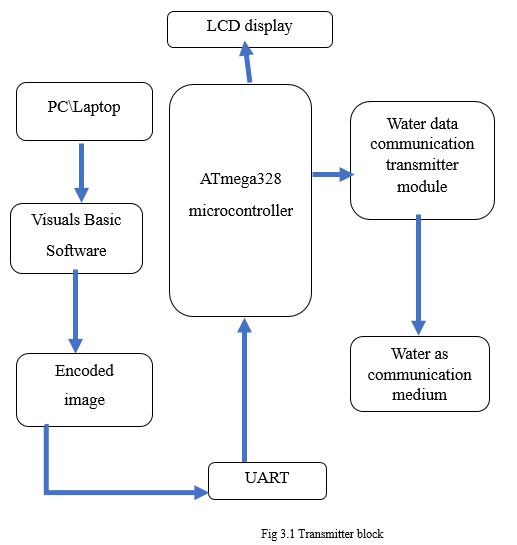
2. Receiver Module
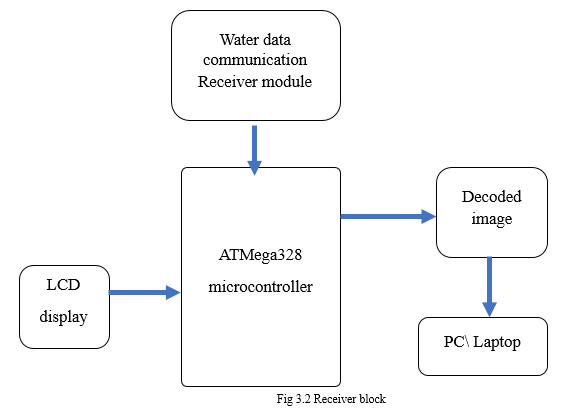
D. Working Of Proposed System
In this project, they develop a system that can transfer data wirelessly from one end to other. Here water acts as a communication medium through which the image transmission is carried out. As shown in block diagram (fig 3.1&fig 3.2), our system comprises of couple of ATMega328 micro controllers. This system consists of both transmitter and receiver module. In the transmitter end they using microcontroller, LCD display, Water data communication transmitter module, UART port, Visual basic software. The image which needs to be transferred is obtained from the user and is encoded using visual basic 6.0 and sent to the microcontroller using UART port. The encoded image is then sent to the receiver module using Water data communication transmitter module. Then the receiver end consists of microcontroller, LCD display, Water data communication receiver module, Visual basic software. The encoded image which was transmitted is then obtained by the water data communication receiver module. The encoded image is decoded using visual basic 6.0 and displayed at the receiver end.
E. Module Description
- Power Supply Module
All electronic circuit works only in low DC voltage, so we need a power supply unit to provide the appropriate voltage supply for their proper functioning. This unit consists of transformer, rectifier, filter & regulator. AC voltage of typically 230volts rms is connected to a transformer voltage down to the level to the desired ac voltage. A diode rectifier that provides the full wave rectified voltage that is initially filtered by a simple capacitor filter to produce a dc voltage. This resulting dc voltage usually has some ripple or ac voltage variation. A regulator circuit can use this dc input to provide dc voltage that not only has much less ripple voltage but also remains the same dc value even the dc voltage varies somewhat, or the load connected to the output dc voltages changes.
2. USB 2.0 TO RS-232 Serial Cable
USB 2.0 to RS-232 Serial Cable is used for serial data transmission. It is a form of communication. Simply it is called as serial connection. It provides the connection between USB and the traditional RS-232 serial port. PLCs use RS232 to talk to other modules or even other PLCs. These modules can be anything that also uses RS232 such as, operator interface or HMI, computers, motor controllers or drives, a robot, or some kind of vision system.
The RS232 cable allow the computer to give commands to the any kind of vision system via a voltage signal. The vision system then deciphers those commands and completes the process. USB 2.0 to RS-232 Serial Cable is shown in fig3.3.
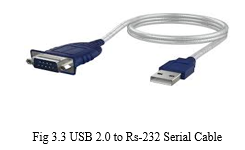
3. Processing Module
ATmega328 is a tool for making computers that can sense and control more of the physical world than your desktop computer. It's an open-source physical computing platform based on a simple microcontroller board, and a development environment for writing software for the board.
ATmega328 can be used to develop interactive objects, taking inputs from a variety of switches or sensors, and controlling a variety of lights, motors, and other physical outputs. Arduino projects can stand-alone, or they can communicate with software running on your computer. The boards can be assembled by hand or purchased preassembled; the open-source IDE can be downloaded for free. The Arduino programming language is an implementation of Wiring, a similar physical computing platform, which is based on the Processing multimedia programming environment.
The Arduino Uno is a microcontroller board based on the ATmega328 (datasheet). It has 14 digital input/output pins (of which 6 can be used as PWM outputs),6 Analog inputs, a 16 MHz crystal oscillator, a USB connection, a power jack, an ICSP header, and a reset button. It contains everything needed to support the microcontroller; simply connect it to a computer with a USB cable or power it with an AC-to-DC adapter or battery to get started.
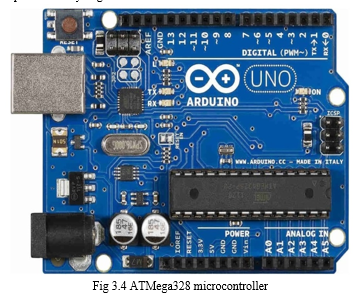
4. Water Data Communication Module
In this project, image transmission through water medium is achieved with the help of water data communication module that are present both in transmitter end and the receiver end. Once the image is encoded in the transmitter end it passes through the water data communication transmitter module which consists of an electrode that are immersed in the water from the transmitter end. A similar set up is designed at the receiver end consisting of an electrode. The image which has to be transmitted is sent in the form of vibrations from the water data communication transmitter module and these vibrations or signal is observed by those electrodes that present in the communication module at the receiver end.
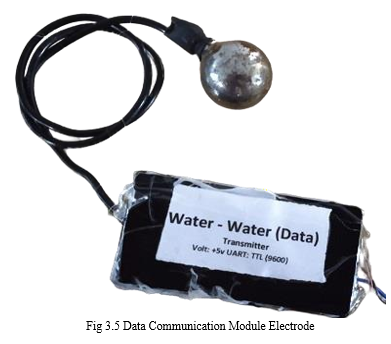
F. Software Description
- Visual Basic: Microsoft proposed Visual Basic to decently be easy to learn and use. Visual Basic was gotten from Essential and engages the speedy application improvement of graphical UI (GUI) applications, induction to data bases using Data Access Objects, Remote Information Objects, or ActiveX Data Objects, and making of ActiveX controls and articles. A designer can make an application using the portions gave by the Visual Basic program itself. Later some time the organization of computer programmers developed outcast parts. Projects written in Visual Basic can similarly use the Windows API, which requires external limit statements. Visual Basic is an event-driven programming language and environment from Microsoft that provides a graphical user interface (GUI) which allows programmers to modify code by simply dragging and dropping objects and defining their behaviour and appearance. The language index still reckons Visual Basic .NET will "sooner or later go into decline, but concedes it's popular for dedicated office applications in small and medium enterprises, and is probably still used by many developers because it's easy to learn.
- Graphical User Interface: The graphical user interface (GUI) is a form of user interface that allows users to interact with electronic devices through graphical icons and audio indicator such as primary notation, instead of text-based user interfaces, typed command labels or text navigation. GUIs were introduced in reaction to the perceived steep learning curve of command-line interfaces which require commands to be typed on a computer keyboard. The actions in a GUI are usually performed through direct manipulation of the graphical elements. GUI is a Graphical Interface that is a visual representation of communication presented to the user for easy interaction with the machine. GUI means Graphical User Interface. It is the common user Interface that includes Graphical representation like buttons and icons, and communication can be performed by interacting with these icons rather than the usual text-based or command-based communication.
IV. RESULTS AND DISCUSSION
A. Hardware Setup
The result description of our project consists of both hardware and software. The experimental results obtained in this project work are discussed here.
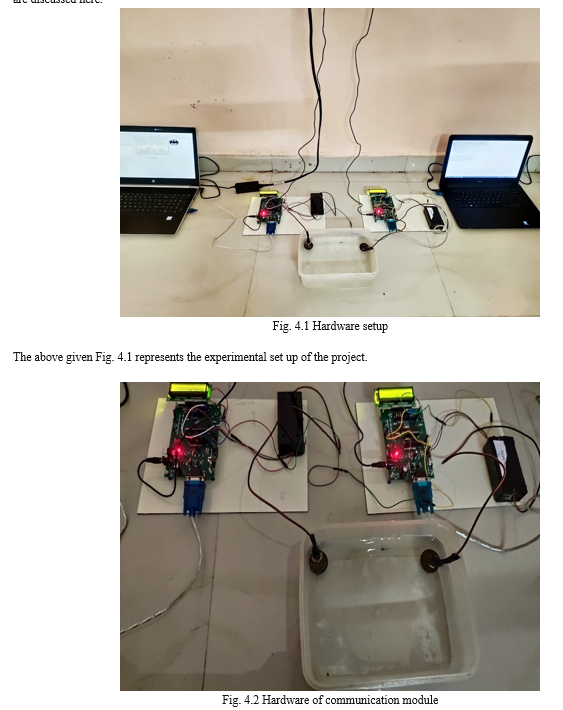
B. Transmitter Section
The output image is obtained using water data communication module and is decoded using visual basic.
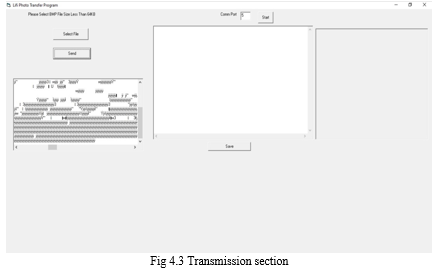
The above given Fig. 4.3 shows the transmitting section. In this section, the image that has to be transmitted is selected and encoded using visual basic. In order to transmit the image, they have to select the particular port through which the encoded image can be transmitted.
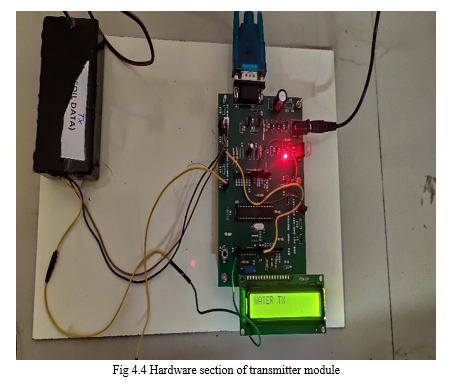
The hardware section of transmitter module is comprised of microcontroller, LCD display, Water data communication transmitter module, UART port, power supply.
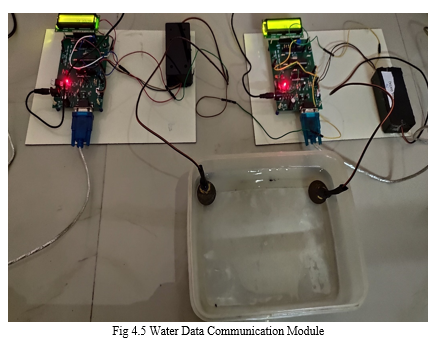
The water data communication module consists of two electrodes which are immersed in water for the transmission of image. Once the encoded image is transmitted, the electrode connected to the transmitter module sends the data in form of vibrations. The vibrations are then received by an electrode similar to that in the transmitter section. The received image is then sent for decoding.
C. Receiver Section
The below given (Fig. 4.6) represents the hardware setup at the receiver section. This section also consists of a LCD, RS232 cable, ATmega328 microcontroller.
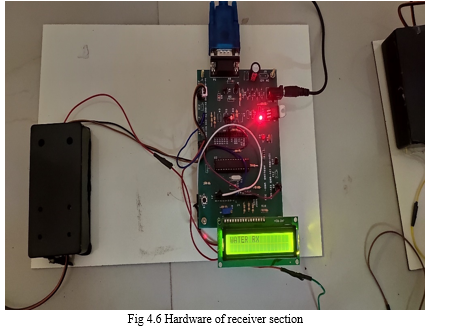
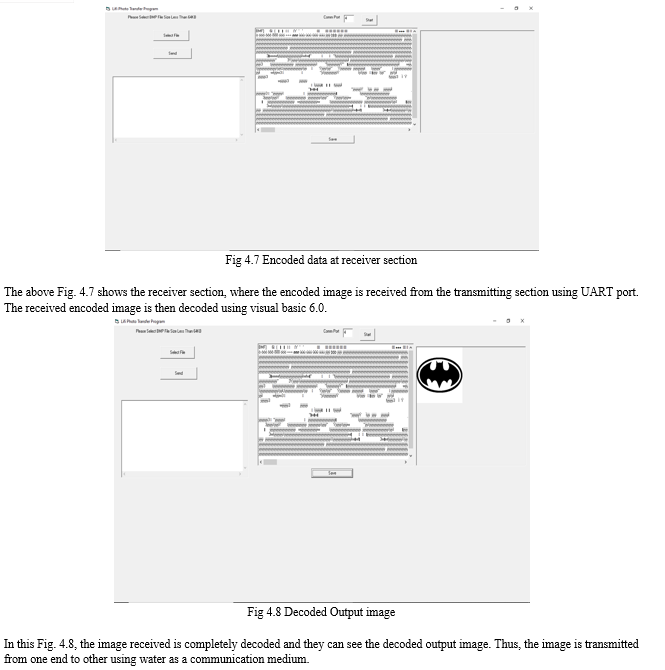
Conclusion
In this paper, a novel method for data transmission is proposed using water as communication medium. The transmitter-receiver based system is proposed for the development of underwater communication using ATMega328 microcontroller. The proposed system is suitable for conventional communication systems in terms of the performance, energy consumption, security of the data. During Transmission, the communication system uses encoded data in order to provide security to the information. B. Future Scope The future of water communication performs a huge position in commentary of marine life, water pollution, oil exploration, surveillance of natural disasters, coastal securities and to monitor changes within the underwater environment.
References
[1] Abílio c. da silva júnior, roberto munoz (2021) “Internet of Water Things: A Remote Raw Water Monitoring and Control System”, IEEE Access Volume : 9. [2] Abdul, Shaik Asif Hussain, Ajay Rana (2018) “Smart Water Meter using Power Line Communication (PLC) Approach for measurements of Accurate Water Consumption and Billing Process”,8th International Conference on Reliability, Infocom Technologies and Optimization (Trends and Future Directions) (ICRITO). [3] Akram Ahmed, Md Shafiqul Islam, Mohamed Younis (2018) “Communication through Air Water Interface Using Multiple Light Sources”, IEEE International Conference on Communications (ICC). [4] Andreja Jonoski1, Thaine H. Assumpção, Iouliani Theona, Chrysovalantis Tsiakos, Maria Krommyda (2019) “Citizens’ campaigns for environmental water monitoring: lessons from field experiments” IEEE Access volume :7. [5] Ata Chizari,Mohammad Vahid Jamali,Jawad A. Salehi,(2017) “Performance Analysis of Multi-Hop Underwater Wireless Optical Communication Systems”, IEEE Photonics Technology Letters ,Volume:29. [6] Chang Shu, Chunlei Zhang, Wei Zhang, Wei Wei, Wei jiang,and Qiao Xiaorui(2020) “LED-based Underwater Wireless Optical Communication for Small Mobile Platforms: Experimental Channel Study in Highly-Turbid Lake Water”, IEEE Access volume : 8. [7] Chen Gong, Tianrui Lin, Nuo Huang, Jianghua Luo Zhengyuan Xu, (2021) “Preliminary Characterization of Coverage for Water-to-Air Visible Light Communication Through Wavy Water Surface”, IEEE Photonics Journal Volume: 13. [8] Chen Gong, Tianrui Lin, Jianghua Luo, Zhengyuan Xu(2020) “Dynamic Optical Wireless Communication Channel Characterization Through Air-Water Interface”,IEEE/CIC International Conference on Communications in China (ICCC Workshops). [9] F. Tonolini and F. Adib (2018) \"Networking across boundaries: enabling wireless communication through the water-air interface\", Association for Computing Machinery. [10] Krishna S, Sarath T V, M S Kumaraswamy, Vishnu Nair (2020) “IoT based Water Parameter Monitoring System”, 5th International Conference on Communication and Electronics Systems (ICCES). [11] Mohd Irshad,Vardhaman Ranjan, Neetu joshi (2020)“The Internet of Things (IOT) Based Smart Rain Water Harvesting System”, 6th International Conference on Signal Processing and Communication (ICSC). [12] Mohamed F.Younis, Md Shafiqul Islam(2019)“Analyzing Visible Light Communication Through Air–Water Interface”, IEEE Access volume:7. [13] Parag Kulkarni, Tim Farnham (2016) “Smart City Wireless Connectivity Considerations and Cost Analysis: Lessons Learnt from Smart Water Case Studies” IEEE Access volume: 4. [14] Shaoxuan Li, Xiaowan Chen, Xiao Zhang (2021) “Research on The Overall Framework of Intelligent Water Conservancy Construction” IEEE 11th International Conference on Electronics Information and Emergency Communication (ICEIEC). [15] Shu Fu, Zhaoquan Zeng, Huihui Zhang, Yuhan Dong (2016) “A Survey of Underwater Optical Wireless Communications” IEEE Communications Surveys & Tutorials, volume: 19.
Copyright
Copyright © 2022 Devatha S, Jayapriya J, Neha S. This is an open access article distributed under the Creative Commons Attribution License, which permits unrestricted use, distribution, and reproduction in any medium, provided the original work is properly cited.
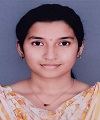
Download Paper
Paper Id : IJRASET44538
Publish Date : 2022-06-19
ISSN : 2321-9653
Publisher Name : IJRASET
DOI Link : Click Here
 Submit Paper Online
Submit Paper Online

